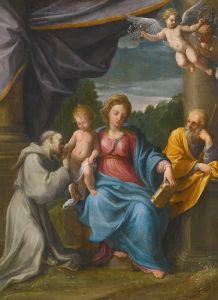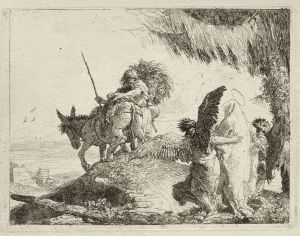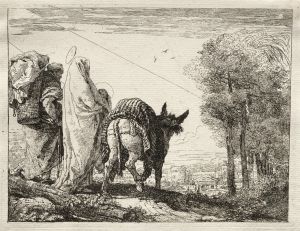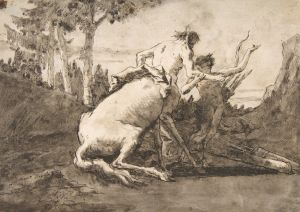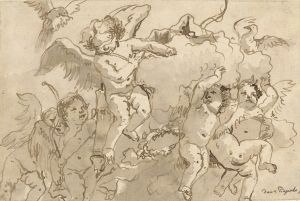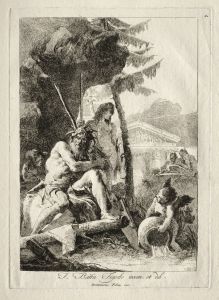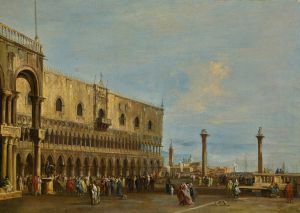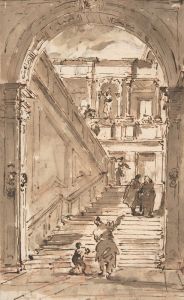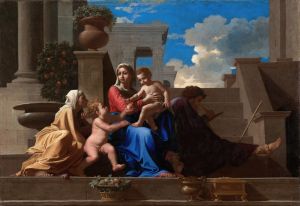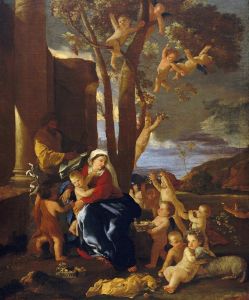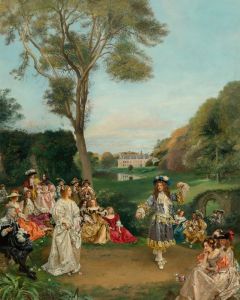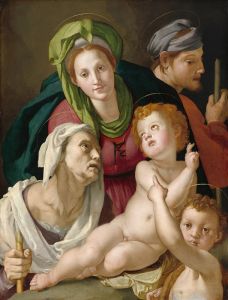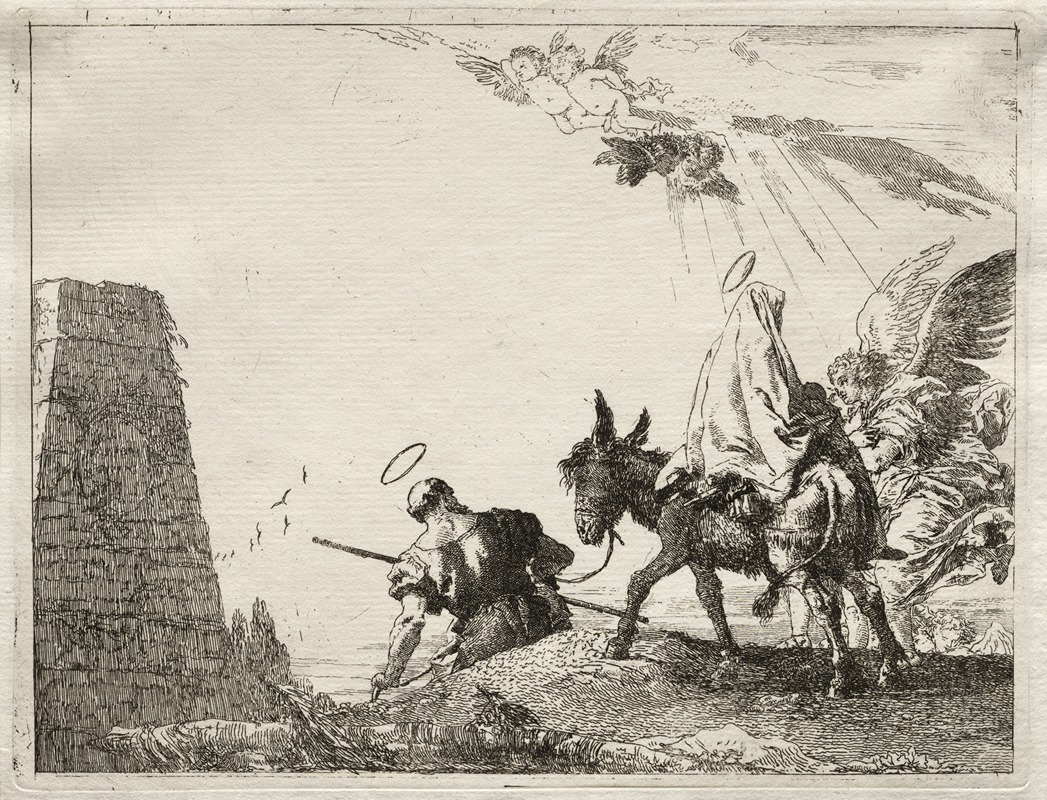
The Holy Family Passing near a Pyramid
A hand-painted replica of Giovanni Domenico Tiepolo’s masterpiece The Holy Family Passing near a Pyramid, meticulously crafted by professional artists to capture the true essence of the original. Each piece is created with museum-quality canvas and rare mineral pigments, carefully painted by experienced artists with delicate brushstrokes and rich, layered colors to perfectly recreate the texture of the original artwork. Unlike machine-printed reproductions, this hand-painted version brings the painting to life, infused with the artist’s emotions and skill in every stroke. Whether for personal collection or home decoration, it instantly elevates the artistic atmosphere of any space.
Giovanni Domenico Tiepolo's painting The Holy Family Passing near a Pyramid is a work by the Venetian artist, who was the son of the renowned painter Giovanni Battista Tiepolo. Domenico Tiepolo (1727–1804) was known for his versatility, producing frescoes, religious paintings, and genre scenes, as well as etchings and drawings. This particular painting reflects his interest in religious themes, which were a significant part of his artistic output.
The artwork depicts the Holy Family—Mary, Joseph, and the infant Jesus—on their journey to Egypt, a narrative derived from the Gospel of Matthew in the New Testament. The inclusion of a pyramid in the background situates the scene geographically, symbolizing Egypt, which was often represented in European art through such architectural motifs. The flight into Egypt is a common theme in Christian art, representing the Holy Family's escape from King Herod's massacre of the innocents.
Domenico Tiepolo's style in this painting demonstrates his ability to blend the grandeur of his father's Baroque influence with his own more intimate and narrative-driven approach. The composition likely emphasizes the humanity of the Holy Family, a characteristic feature of Domenico's work, which often sought to make religious subjects relatable to viewers. His use of light and color, as well as his attention to detail, reflects the Venetian tradition of painting, which was renowned for its rich palettes and atmospheric effects.
The exact date of the painting is not definitively known, but it is consistent with Domenico Tiepolo's mature period, during which he explored both religious and secular themes with equal skill. The work is an example of how 18th-century Venetian artists interpreted biblical stories, often incorporating imaginative elements to engage the viewer.
As of now, the painting is held in a private collection or museum, though specific details about its current location or provenance are not widely documented. It remains a testament to Domenico Tiepolo's ability to convey narrative and emotion through his art, continuing to attract interest from scholars and art enthusiasts alike.
This painting is one of many that illustrate Domenico Tiepolo's contribution to the artistic legacy of the Tiepolo family, showcasing his unique voice within the broader context of Venetian art in the 18th century.





